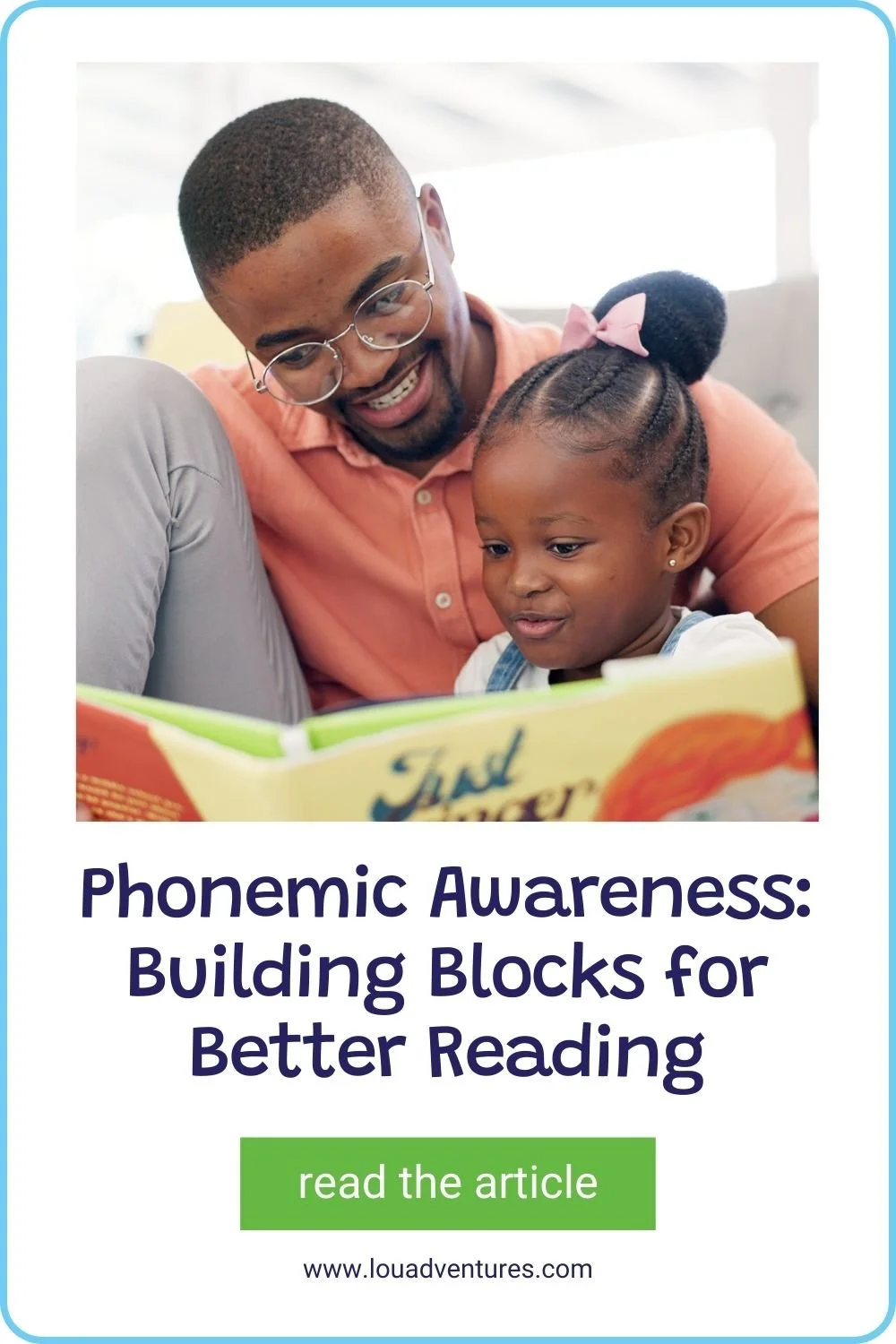The Building Blocks for Better Reading: Understanding Phonemic Awareness
Part 5 of Our Series: Reading Roots — The 5-Step Journey for Kids
Reading Time: 4 mins, 19 secs
Phonemic awareness is an essential pre-reading skill that doesn’t always get the attention it deserves.
Phonemes are the first step in understanding how words are put together and how they relate to each other. Through sound rather than sight, pre-readers can find relationships between sounds as they build words.
What is Phonemic Awareness?
Phonemic awareness is the ability to recognize and manipulate individual sounds, known as phonemes. There are 44 unique phonemes in the English language, made with individual letters, and combinations of letters. For example, the “hard c” that sounds like /k/ in cat, the “soft c” that sounds like /s/ in cell, and the digraph /ch/ in chalk, are three unique phonemes made with the letter C. It is important to understand that phonemic awareness does not require any written language or even knowledge of letters – which makes it a wonderful place to start for young pre-readers!
Here are 6 ways to help build your child's phonemic awareness:
1. Phoneme Isolation
Ask your child to isolate a sound in a spoken word. Start with the first sound they hear in their own name then play with other familiar words. Work towards identifying final sounds and then medial sounds.
Example - Dog
What’s the first sound you hear in dog? (The response should be the sound /d/, not the letter D)
What’s the last sound you hear in dog? (/g/)
What’s the middle sound you hear in dog? (/o/ or the “short o” sound)
2. Phoneme Blending
Speak in phonemes with your pre-reader. Context clues with familiar activities will guide the activity as well. The first few might be all out guesses, but they will get the hang of it.
What’s the first sound you hear in dog? (The response should be the sound /d/, not the letter D)
What’s the last sound you hear in dog? (/g/)
What’s the middle sound you hear in dog? (/o/ or the “short o” sound)
3. Phoneme Segmentation
Segmentation is the opposite of Blending. Once your pre-reader is fluent in Phoneme Blending, ask them to come up with some sentences of their own with one word broken into phonemes. If they can speak in sounds and you can identify their efforts, they have cracked the code of segmentation.
4. Phoneme Addition
The addition of phonemes is basically learning to rhyme. Begin by building on a 2 sound word and build up to more complex sounds.
At - /a/ /t/
Add /s/to /a/ /t/ - sat
Add /k/ to /a/ /t/ - cat
Add /h/ to /a/ /t/ - hat
5. Phoneme Deletion
Deletion activities are similar to addition activities; it is the understanding that not only do the addition of sounds make different words — deletion of phonemes allows the pre-reader to discover words hiding in other words.
Flake – take away the first sound, /f/ what word are you left with? Lake!
Belt – take away the last sound /t/ what word are you left with? Bell!
Skip – take away the medial consonant /k/ what word are you left with? Sip!
6. Phoneme Substitution
Substitution activities continue to build on the addition activities, but instead of adding a phoneme you are swapping phonemes. Here are a few 2 sound substitutions.
Rug to Bug – Remove the /r/ and add a /b/
Bad to Bat – Remove the /d/ and add a /t/
Dig to Dog – Remove the /i/ and add the /o/
Tips To Help Children Learn Phonemic Awareness
Help your pre-reader understand phonemes by starting small and building on their success and confidence.
Practice. Incorporate fun, interactive activities into daily routines, such as rhyming games, clapping out syllables in words, and identifying the beginning sounds of words.
Read aloud. Reading texts — particularly books with rhymes and rhyming phrases — will help your children develop their auditory skills and expose them to new sounds.
Play games. Developing your child’s phonemic awareness skills can (and should be) fun! There are many different word games that you can play with your child aloud based on the distinct areas of phonemic awareness. Car trips, doctor’s waiting rooms, and even the dinner table are great places to spend a few minutes practicing phonemic awareness. Remember, a phoneme is simply a sound, it can even be played with your eyes shut. Play games that focus on isolating and manipulating sounds, such as "I Spy" for initial sounds or "What's the Word?" where children guess the word based on its individual phonemes.
Give feedback. Offer immediate assistance if they are struggling with understanding and pulling apart phonemes. Break down activities into manageable steps and move on only after they have mastered the first building block. Confidence is key.
Additional Resources For You To Help Your Pre-Reader:
Learn the Graphemes, the written representation of a phoneme.
To help your pre-reader focus on the sound, not the letter, refer to this video.
Phonemic awareness is essential to proficient reading and writing skills. By understanding phonemic awareness and finding creative ways to support childhood learning, parents and educators can empower children to become better readers.
Read the Entire Series
Five Strategies to Help Kids Build Strong Reading Comprehension
Four Strategies for Kids to Develop Strong Vocabulary Skills
The Building Blocks for Better Reading: Understanding Phonemic Awareness
Share this article






